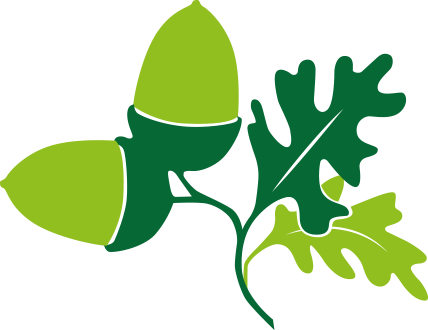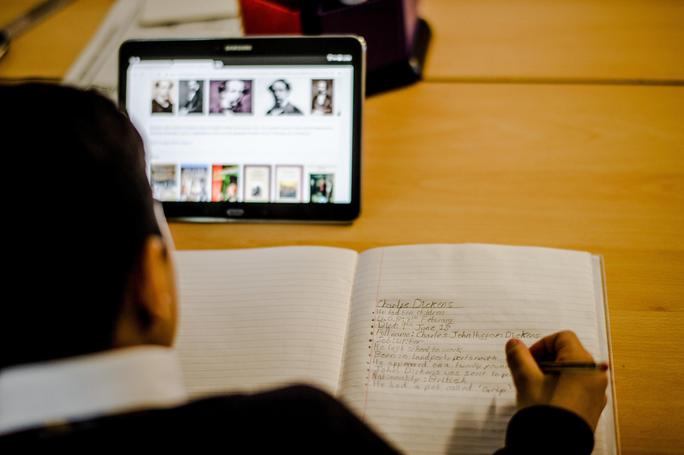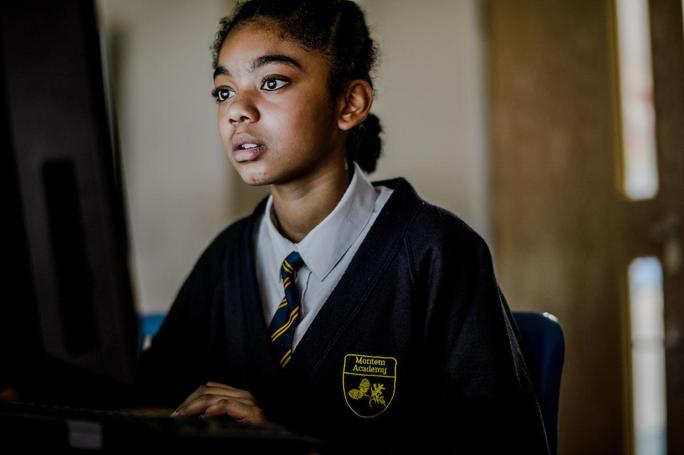Computing
Computing
Curriculum Intent, Implementation and Impact

"Everyone to Excel through Pride and Ambition"
Intent
The goal of Computing at Montem Academy is to provide high quality teaching centred around ten taxonomy strands of Computing listed in ‘Implementation’.
At Montem, it is our desire that all pupils go beyond simple consumption of technology, to add an exciting dimension to teaching and learning in computing and across other areas of the curriculum.
Montem’s intent is to equip pupils with a wide range of skills to prepare them for the future. Whether it be through using a range of software on a variety of devices, developing an understanding of how computer systems work, or facilitating pupils’ creativity and ability to develop their ideas using IT, our pupils should gain experiences that strengthen their skills.
Montem intends that this skill set is continually delivered with Online Safety in mind in all areas covered. Our school aims to promote a cross-curricular approach to ICT & Computing, including extra-curricular lunchtime clubs for pupils.
Our curriculum is an inclusive curriculum for all abilities and is sequenced to build on prior learning and cyclical to revisit areas of learning in varied ways.
Implementation
Computing at Montem Academy is taught by a specialist teacher throughout the year, with each class being taught for half a term in the Autumn, Spring and Summer terms. This means that the 2 out of 4 classes per year group will be taught in Autumn 1 while the other 2 classes will be taught in Autumn 2. Children not being taught computing during a half-term will be given the opportunity to do a Computing Club instead.
The areas of Computing taught and assessed from Year 1 to Year 6 at Montem are as follows:
- Algorithms - Be able to comprehend, design, create, and evaluate algorithms
- Computer networks - Understand how networks can be used to retrieve and share information, and how they come with associated risks
- Computer systems - Understand what a computer is, and how its constituent parts function together as a whole
- Creating media - Select and create a range of media including text, images, sounds, and video
- Data and information - Understand how data is stored, organised, and used to represent real-world scenarios
- Design and development - Understand the activities involved in planning, creating, and evaluating computing artefacts (anything created by a human using a computer)
- Effective use of tools - Use software tools to support computing work
- Impact of technology - Understanding how individuals, systems, and society as a whole interact with computer systems
- Programming - Create software to allow computers to solve problems
- Safety and security - Understand risks when using technology, and how to protect individuals and systems
Structure of the work
Every unit of work in Montem Computing Curriculum contains: a unit overview; a learning graph, to show the progression of skills and concepts in a unit; lesson content including a detailed lesson plan, slides for learners, the resources needed; and formative and summative assessment opportunities.
Spiral curriculum
The units for key stages 1 and 2 are based on a spiral curriculum. This means that each of the themes is revisited regularly (at least once in group each year), and pupils revisit each theme through a new unit that consolidates and builds on prior learning within that theme. This style of curriculum design reduces the amount of knowledge lost through forgetting, as topics are revisited yearly. It also ensures that connections are made even if different teachers are teaching the units within a theme in consecutive years.
Physical Computing
The Montem Computing Curriculum acknowledges that physical computing plays an important role in modern pedagogical approaches in computing, both as a tool to engage pupils and as a strategy to develop pupils’ understanding in more creative ways. We aim to use a range of devices, such as programmable robots, Micro Bits and other physical computing devices.
Impact
High quality, well-resourced computing lessons delivered by an experienced specialist teacher.
- Enjoyment of technology use at a deeper, interactive level than just playing games and watching video content.
- Increased understanding of the necessity for online safety and an understanding of the risks and dangers of inappropriate technology usage
- Pupils are assessed at the end of a unit of work to demonstrate their knowledge through completion of a quiz.
- Pupils can also complete self-assessments, answer questions or engage in discussion during lessons.
- Willingness to engage with technology in a creative sense outside school (dependent on devices available at home) because of increased targeted use in school
- There should be a greater use of devices displayed by pupils in other areas of the curriculum (This can be measured by the number of logins per week).
|
|
|
|



